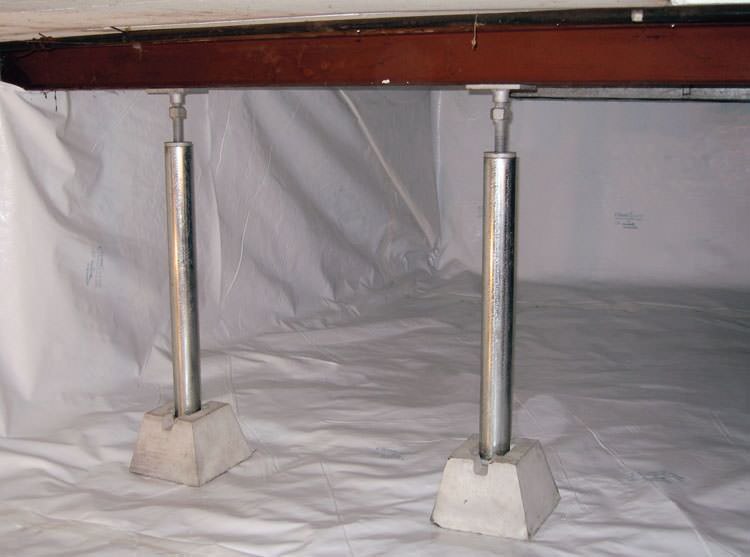House and foundation settling occurs in pier and beam or block and base homes when soil shifts.
How to measure a sagging floor joist.
But the title of your post is floor sagging between joists.
Depending upon the conditions it is possible to strengthen or repair existing framing members such as floor joists or roof rafters by adding reinforcing material sandwiching the member on either side with plywood is sometimes worthwhile but the plywood must be installed correctly for greatest strength.
You mention 2 different things.
Check sag locate the area on the floor where it sags by measuring the height in the room from the floor to.
If the floor is sagging between joists 1.
Sagging floor joists can be fixed.
Thre ways to fix a sagging or sloping floor.
It s very simple to measure the sag of a floor with a laser level.
I start the laser on the lower most part of the floor joist and run it along the beam to the lowest part of the other side.
A sagging floor typically implies a sagging floor joist underneath it.
A day until they re level.
The method used to fix the problem depends on the reason the joist is sagging and the number of joists.
If you see a red line somewhere in the middle you have a joist that sags.
Working in the basement determine exactly where the joists are sagging.
The subfloor could be too thin.
At one point you mention a sagging joist that needed to be sistered.
Tack a beam under the sagging joists.
Sagging floors are an annoyance and an eyesore but they can also be dangerous.
Fixing a sagging floor requires patience and construction experience but it can be done.
Typically you ll find that the center joists are bending downward in the middle of the area furthest from the support walls.
As expansive clay soils expand and contract underneath the home it can cause foundation problems that lead to cracks in walls sagging floors and other structural issues.
Like the pyramid builders it uses water but instead of it being in trenches it is usually in clear plastic tubes similar to a clear plastic hose.
However the underlying problems should also be addressed to ensure a long term repair.
A dip or slope in the floor could indicate one or more saggy joists beneath the subfloor.
Then set new joists same height as existing ones alongside the old.
Nailing two 2x4s together will work to span about three joists unless the sag is under a weight bearing wall.
Set a hydraulic jack and post under the beam and jack up the joists about 1 8 in.
I like to set it up with a regular thumb tack and then let the laser do the rest.
Do this by slowly moving your level across the bottom of the joists and watching to see how the bubble moves.

